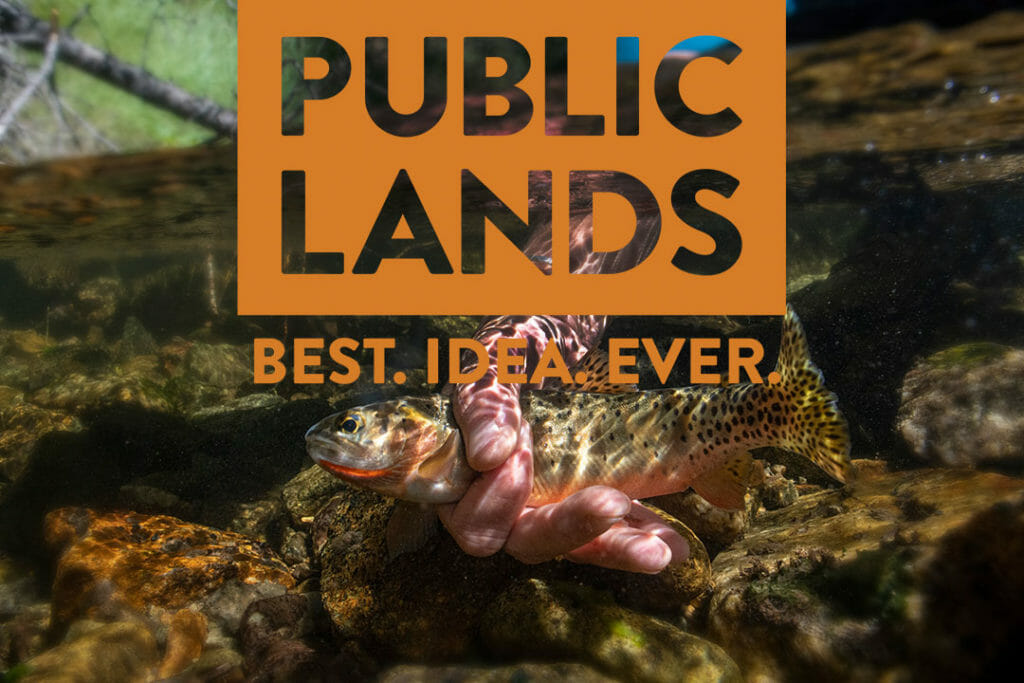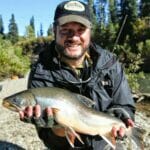Diana Miller with a Yellowstone cutthroat trout caught in a tributary to Yellowstone Lake in the summer of 2018. Dave Sweet photo.

Trout Unlimited is devoting the month of September to celebrating public lands and the agencies dedicated to upholding America’s public land heritage. It’s no coincidence that National Hunting and Fishing Day and National Public Lands Day are both during September — the month is tailor-made for hunters and anglers to enjoy all that public lands have to offer.
Join us this month as we get to know the agencies who manage our public lands and explore special places around the country. Stay tuned to TU.org, Facebook, Instagram and Twitter for updates, contests and opportunities to take action. Most of all, get out this September and enjoy your public lands!
Sometimes we don’t trust what we have seen. Or in this case, what we have caught.
One year after Dave Sweet and his daughter, Diana, traveled by horseback into the Thorofare region of the Greater Yellowstone Ecosystem, Sweet found himself headed back into an area rightfully dubbed the most remote land in the Lower 48 states.
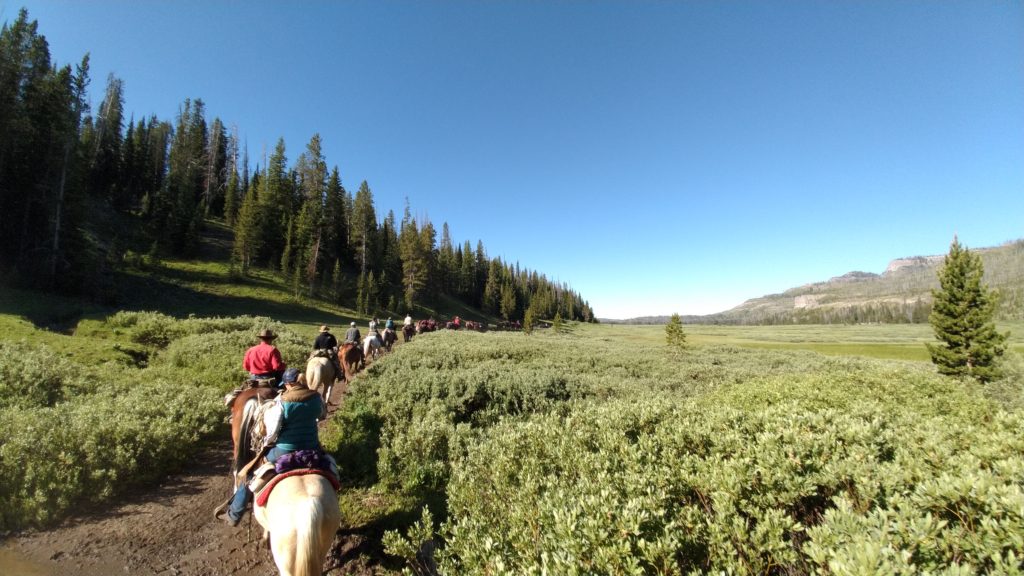
Sweet has spent more than a decade as a Trout Unlimited volunteer from the East Yellowstone Chapter in Cody, Wyoming, working with partners to keep Yellowstone cutthroat trout from disappearing from the world’s first national park due to invasive lake trout.
Dave and Diana made the 26-mile trip by horseback into the Thorofare cutthroat spawning grounds in the summer of 2018. They were on a mission to see if the recovery efforts were reaping any benefits. Their trip was shared in a film called “The Return” and shown across the country as part of the Fly Fishing Film Tour earlier this year.
Sweet returned to the Thorofare this summer and with him, among others, was Todd Koel – who, as Yellowstone National Park fisheries supervisor, has been vital in the efforts to suppress lake trout and keep namesake cutthroat in the park.
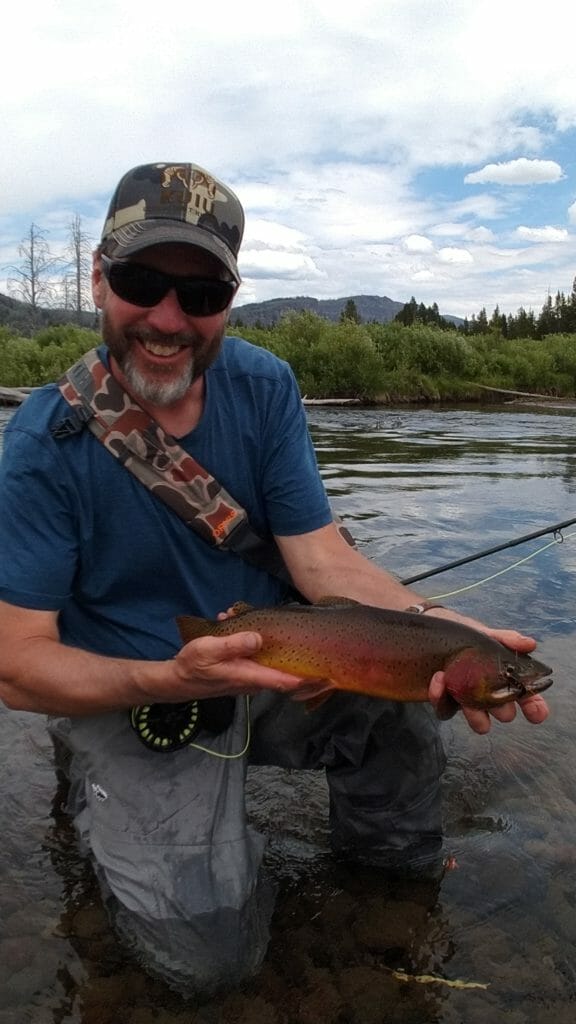
“When I was able to pack into Two Ocean Pass and camp on Atlantic Creek in early July, I couldn’t believe the numbers and sizes of the cutthroat that migrate that far into the wilderness from Yellowstone Lake. It was really amazing to see the spatial extent to which the recovery is impacting this ecosystem,” Koel said. “Similar to Pacific salmon, the cutthroat trout of Yellowstone Lake migrate 30 plus miles into the remote Upper Yellowstone/Thorofare backcountry streams where they spawn and then return to Yellowstone Lake. The Yellowstone Lake restoration is having a broad impact deep in the backcountry of the Bridger-Teton Wilderness, which is great to see.”
The first known lake trout was caught in Yellowstone Lake in 1994. Fisheries biologists worried what the large fish would mean to cutthroat, which were about to be replaced as the top predator in Yellowstone Lake.
It didn’t take long for the impact to show up. Anglers started reporting less cutthroat around the turn of the century and the decline picked up speed as the lake trout population exploded.
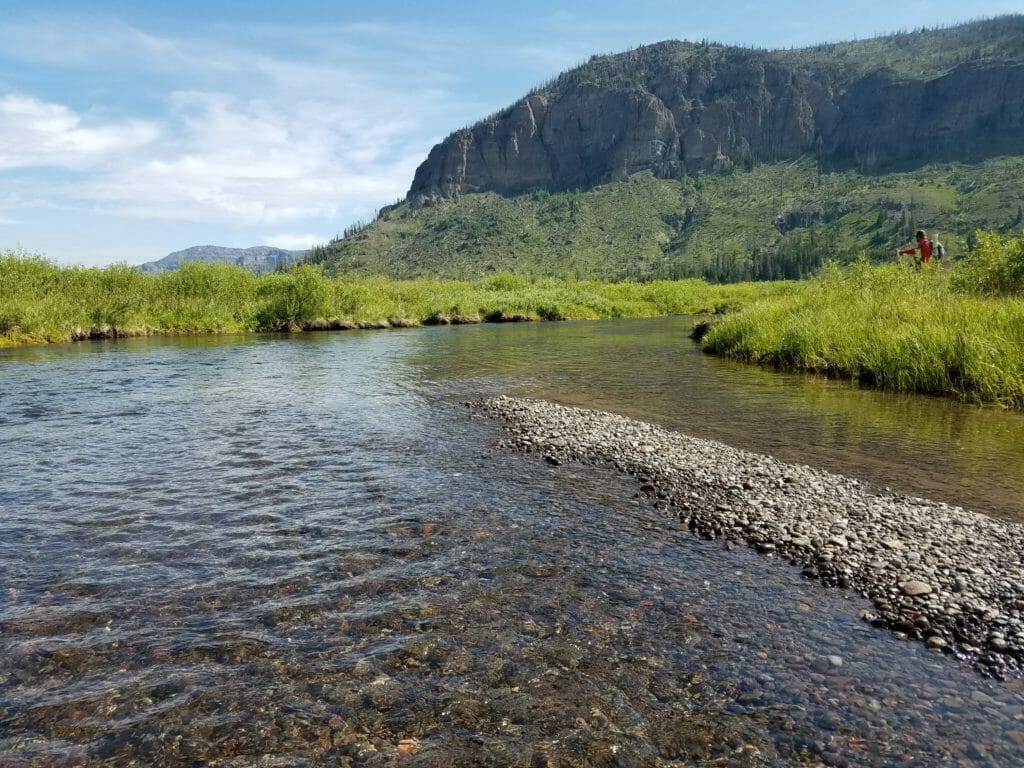
Yellowstone was once recognized as a cutthroat stronghold, but what had been a healthy and vibrant population of 4 million was eventually decimated by 90 percent.
Anglers were not the only ones to recognize the decline. More than 40 other wildlife species have been reported as being impacted by the reduced numbers of cutthroat. Cutthroat, by nature are not deep-water fish. They typically live near the surface of the lake and head for the tributary creeks when it is time to spawn each spring. For centuries animals like grizzlies, otters and osprey have come to rely on cutthroat as a source of food. Several years ago, reports came in of a grizzly spotted feeding on spawning cutthroat in a tributary. It was the first time it had been observed in more than a decade.
National Park Service officials have been killing lake trout from Yellowstone Lake with gillnets since 1994. More than 3 million have been removed. It is impossible to eradicate all the lake trout from Yellowstone Lake, but it is possible to crash the population to manageable numbers that will allow the cutthroat to fully recover.
“Population modeling indicates we have another four or five years and we will reach our goal of 100,000 fish remaining in the lake,” Koel said. “Netting will need to continue, but hopefully at a reduced maintenance level to ensure the lake trout do not rebound and again expand across the lake.”
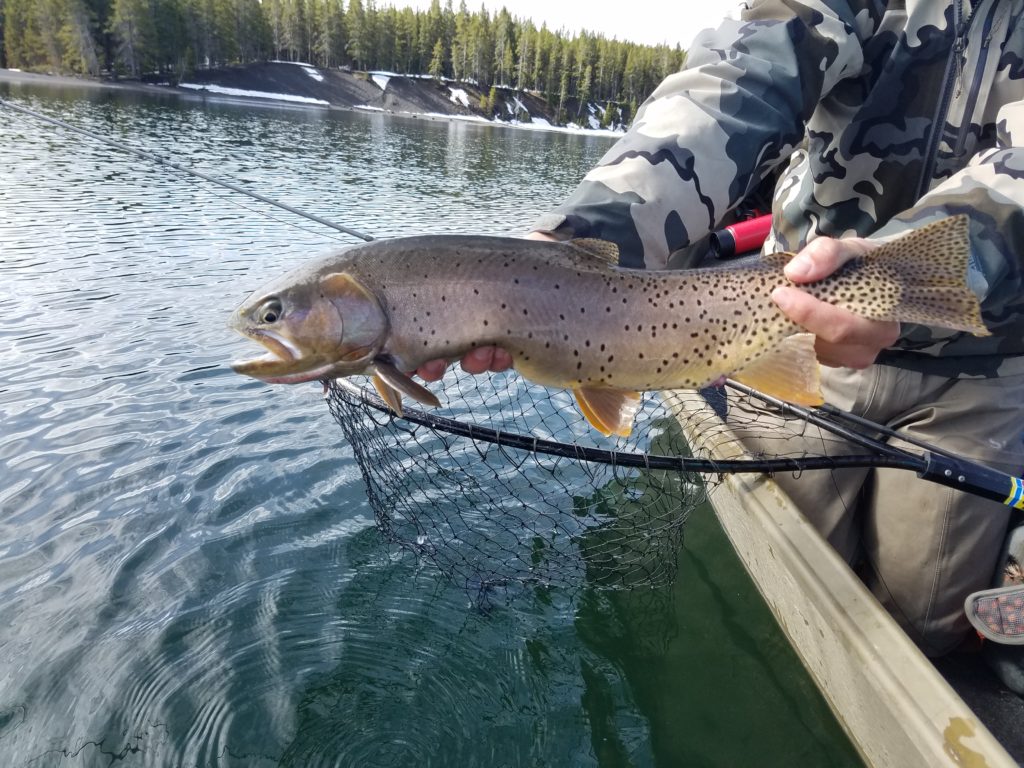
Netters are working longer and not catching as many lake trout, a sign things are improving. While larger – spawning size – cutthroat are showing back up, big lake trout are no longer the norm. Officials report a 73 percent decrease in abundance of age 6 and older lake trout since the peak in 2011.
The Return Part 2 was validation for Sweet that the summer of 2018 trip into the Thorofare was not merely a dream, but a dream come true. To share the sight of 24-inch Yellowstone cutthroat with somebody who has been fighting with him to protect the native fish was particularly special.
“It has been an honor to work with Todd through the years and it was very meaningful for me to be with him when he saw what our efforts, and the efforts of so many others, have led to,” Sweet said. “I’m hopeful we can find the corner on this invasion and get around it to protect Yellowstone cutthroats for centuries to come.”
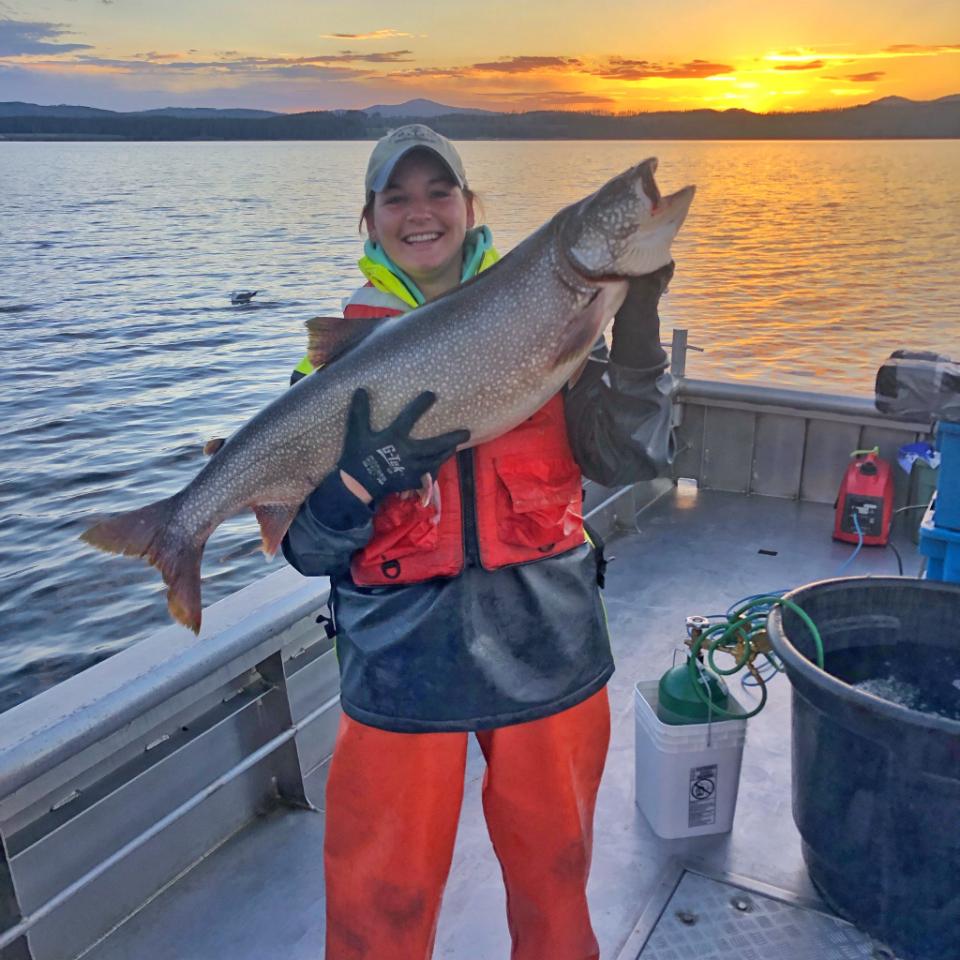
National Park Service photo.
Brett Prettyman is the Intermountain Communications Director for Trout Unlimited. Yellowstone National Park is his favorite destination for fishing and family memories.
